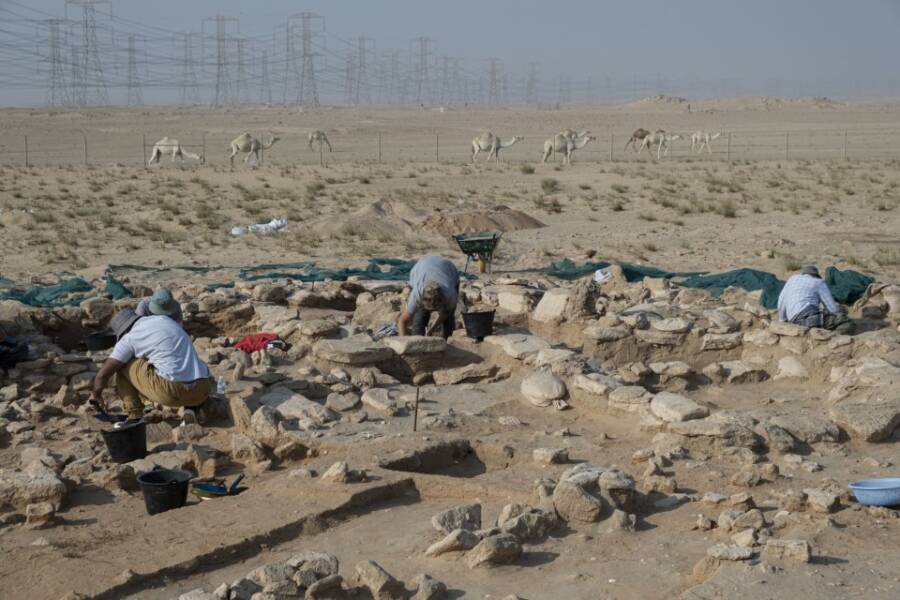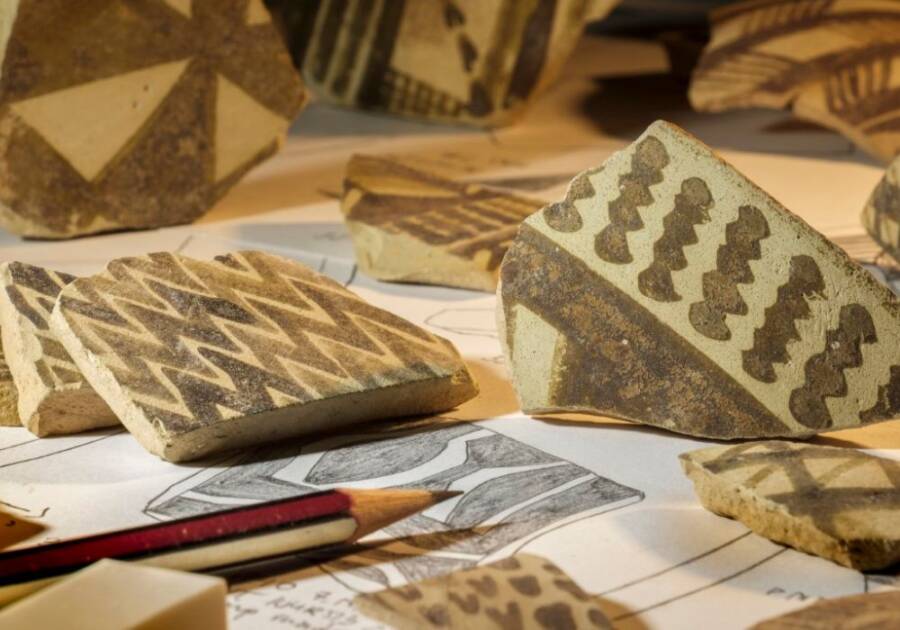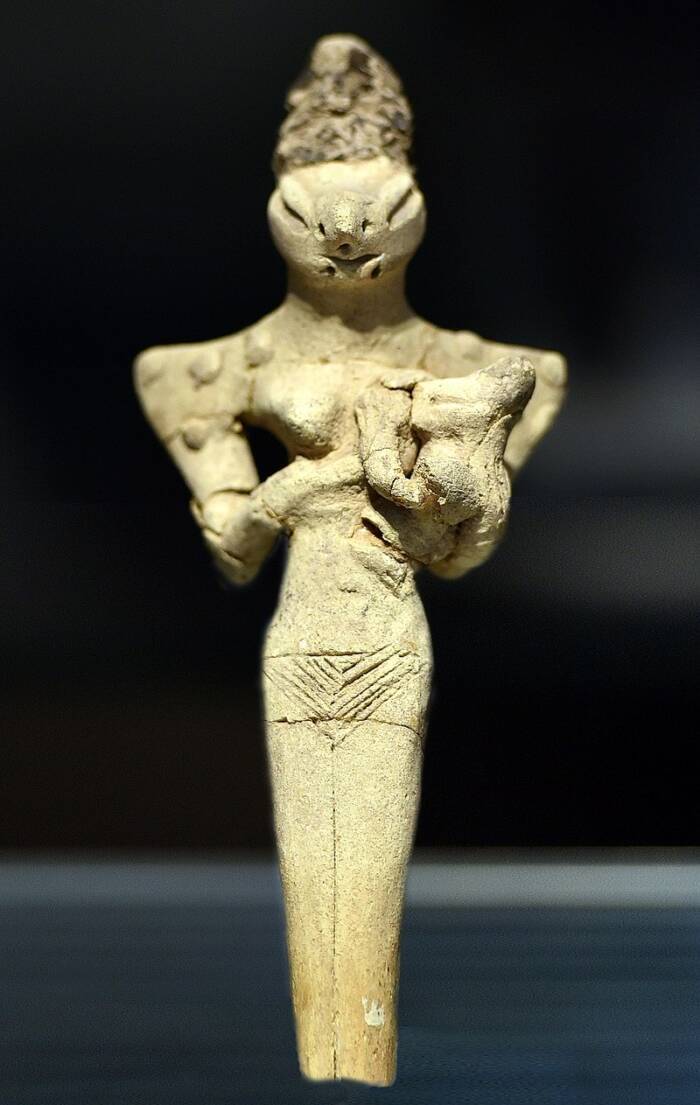Archaeologists excavating a site in Kuwait that was once home to the prehistoric Ubaid culture unearthed a figurine with alien-like features that dates back to the sixth millennium B.C.E.

Adam Oleksiak/Polish Center of Mediterranean Archaeology at the University of WarsawThe 7,000-year-old figurine with slanted eyes and an elongated skull.
While excavating Kuwait’s Bahra 1 archaeological site, one of the oldest settlements on the Arabian Peninsula, archaeologists came across a bizarre clay figurine that looked eerily like an alien. Its distinctive style revealed that it was crafted by the Ubaid people, who lived in the area more than 7,000 years ago.
While similar elongated head sculptures have been found across Mesopotamia, this is the first of its kind ever discovered in Kuwait. Now, researchers hope the figurine will shed light not only on Ubaid rituals and social practices but also on prehistoric connections between Mesopotamia and the Arabian Gulf.
Researchers Discover An Unexpected Figurine In The Kuwaiti Desert

J. Sliwa/Polish Center of Mediterranean Archaeology at the University of WarsawArchaeologists at work excavating Bahra 1, one of the oldest settlements on the Arabian Peninsula.
A team of archaeologists from Poland and Kuwait first began excavations at the Bahra 1 archaeological site in northern Kuwait in 2009. The settlement, which was occupied between 5500 B.C.E. and 4900 B.C.E., is one of the oldest on the Arabian Peninsula.
Members of the Ubaid culture, a prehistoric Mesopotamian civilization known for their unique style of pottery, once lived at the site. During the 2024 excavation season, archaeologists found a stunning example of Ubaid art in the form of a clay figurine.
Estimated to be more than 7,000 years old, the figurine takes the shape of a head with two slits for eyes and an elongated skull. While similar sculptures have been found across Mesopotamia, this was the first of its kind ever discovered in Kuwait.
“The discovery of the clay human head is one of the most remarkable finds of the current excavation season,” said Hassan Ashkanani, an excavation leader from Kuwait University, per The Jerusalem Post.
However, lingering questions about what the figurine symbolized continue to pique the interest of researchers, motivating them to continue their excavations in hopes of finding answers.
What Was The Meaning Of The Clay Figurine?

Adam Oleksiak/Polish Center of Mediterranean Archaeology at the University of WarsawShards of pottery made by the Ubaid civilization of prehistoric Mesopotamia.
Over the years, various Ubaid figurines have been unearthed across the areas of Mesopotamia where the civilization once lived. The distinctive sculptures have been called “lizard-headed” or “snake-like,” and the one found at Bahra 1 is no exception.
Scholars have theorized that the skulls of many of these figurines, including the one most recently discovered, are elongated because they depict artificial cranial deformation. This involved wrapping tight binds around a young child’s head to shape their skull, possibly as a physical representation of class, wealth, or community. Evidence of this practice has been found in Ubaid burials across Mesopotamia.

Wikimedia Commons/CC BY-SA 4.0Ubaid figurine of a lizard-headed woman nursing a child c. 4000 B.C.E.
While their unique designs are well-known, the sculptures’ meanings are far less understood. Archaeologist Piotr Bieliński, one of the excavation leaders, noted, “Its presence raises intriguing questions about its purpose and the symbolic, or possibly ritualistic, value it held for the people of this ancient community.”
Further examinations of the figurine are underway, and experts have high hopes that future excavations will answer any lingering questions and reveal even more about Ubaid culture in the region.
After reading about the alien-like figurine discovered in Kuwait, go inside nine of the most convincing alien abduction stories. Then, learn about Göbekli Tepe in Türkiye, the oldest temple in the world that predates Stonehenge by 6,000 years.





